
How to Use A4988 Circuit Board: Examples, Pinouts, and Specs
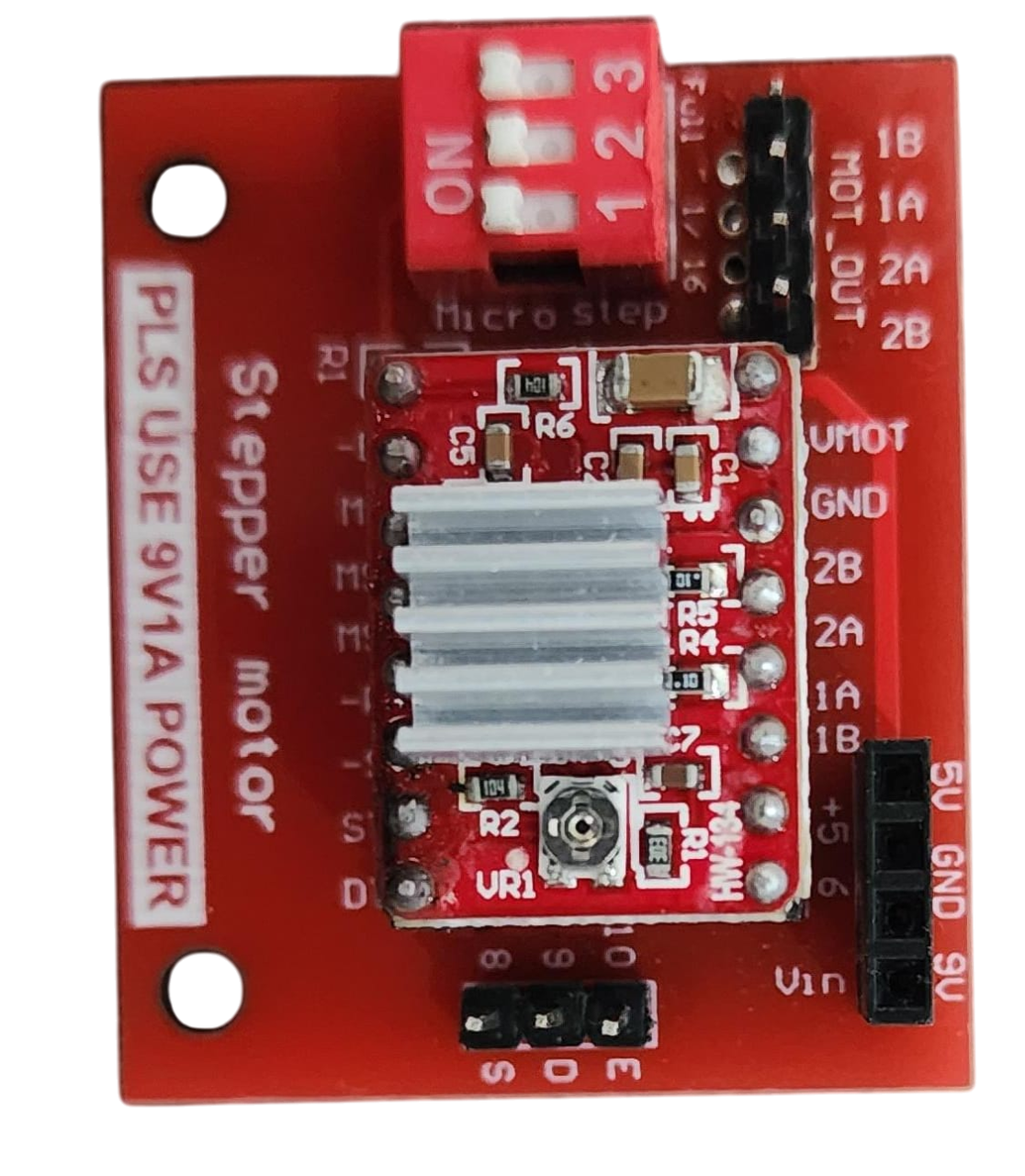
 Design with A4988 Circuit Board in Cirkit Designer
Design with A4988 Circuit Board in Cirkit DesignerIntroduction
The A4988 Circuit Board is a stepper motor driver designed for precise control of bipolar stepper motors. Manufactured by Custom with the part ID A4988, this component is widely used in applications requiring smooth and accurate motor movement. It features adjustable current control, microstepping capabilities, and thermal protection, making it a reliable choice for projects such as 3D printers, CNC machines, and robotics.
Explore Projects Built with A4988 Circuit Board
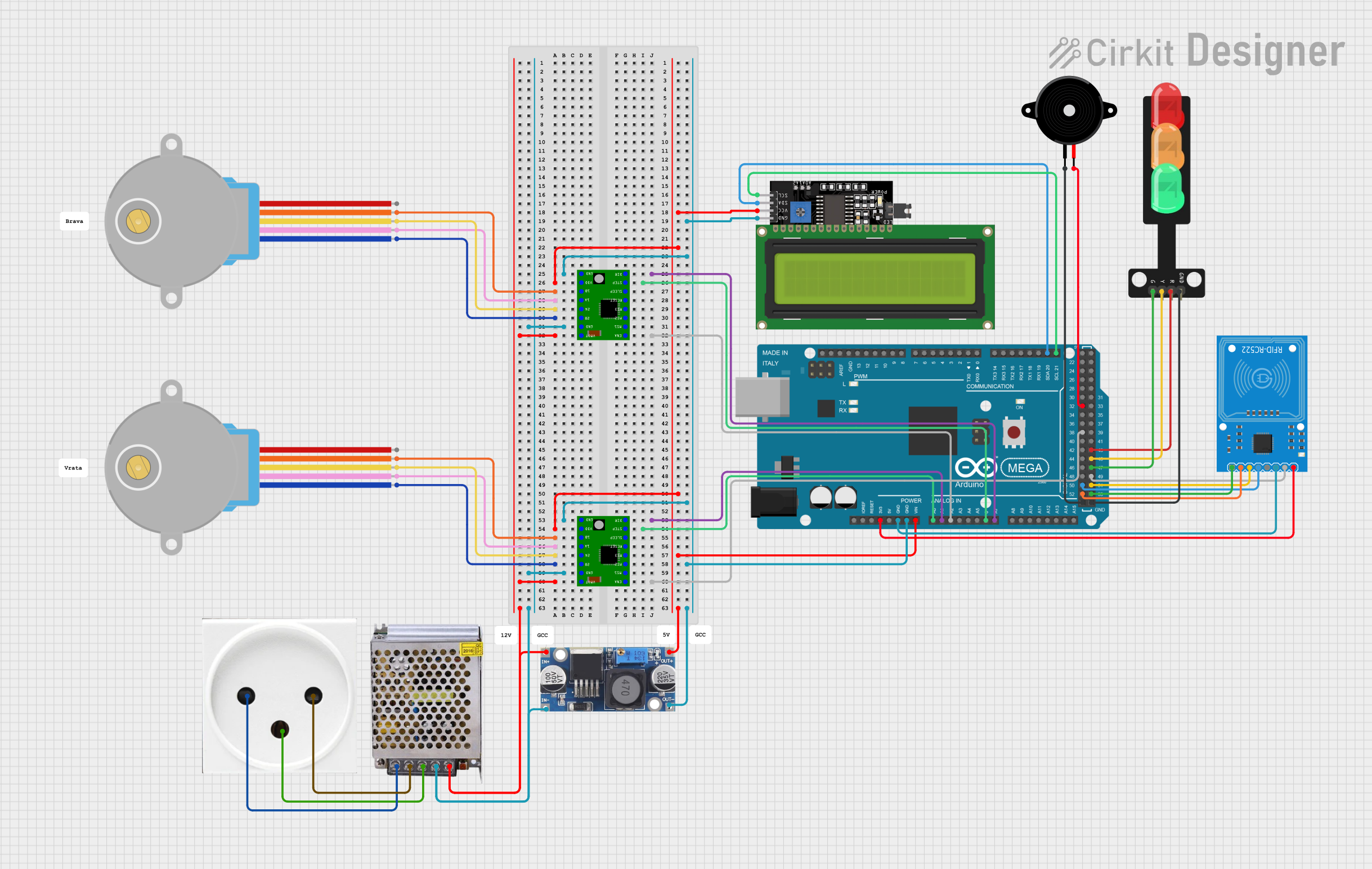
 Open Project in Cirkit Designer
Open Project in Cirkit Designer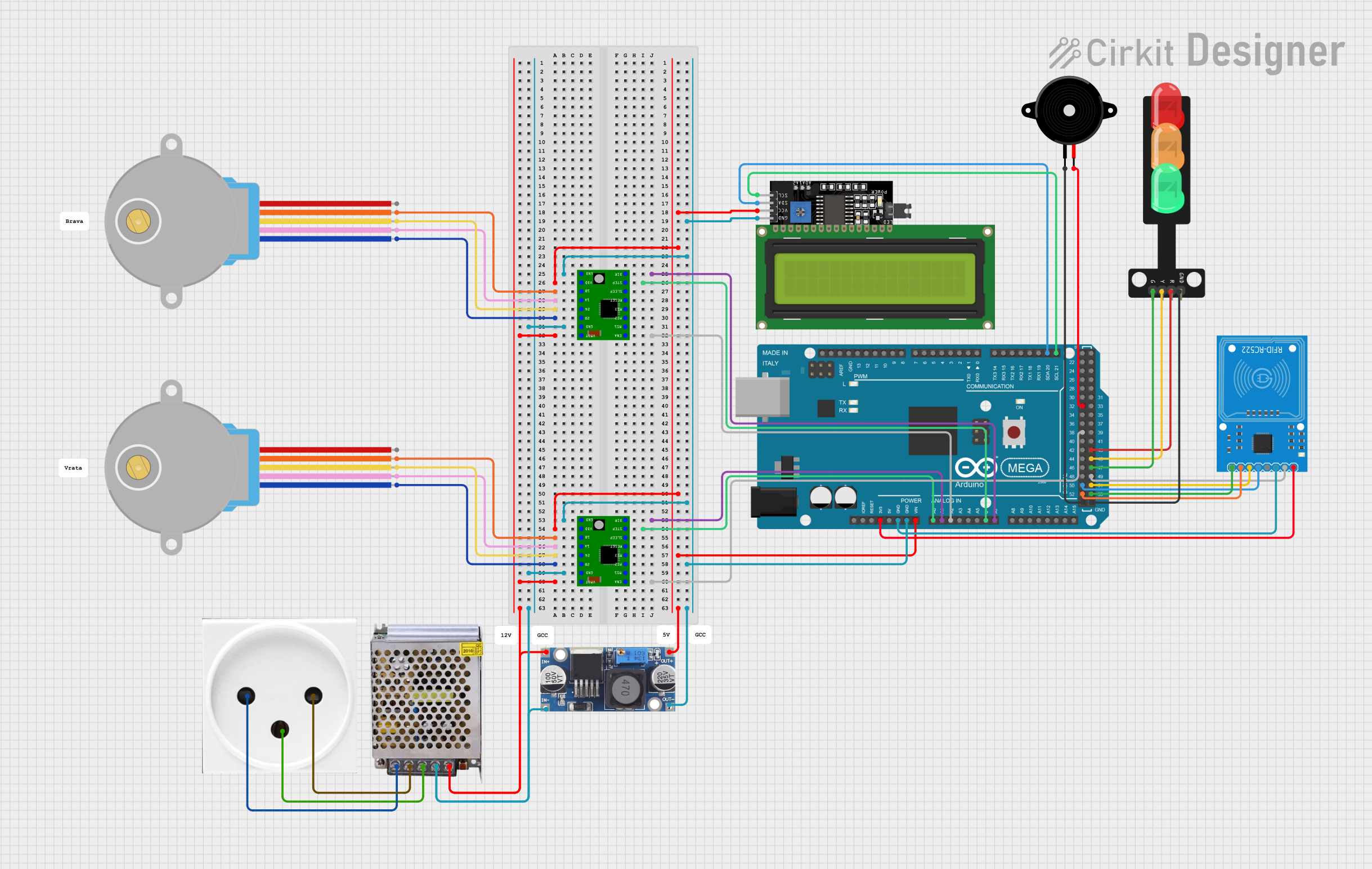
 Open Project in Cirkit Designer
Open Project in Cirkit Designer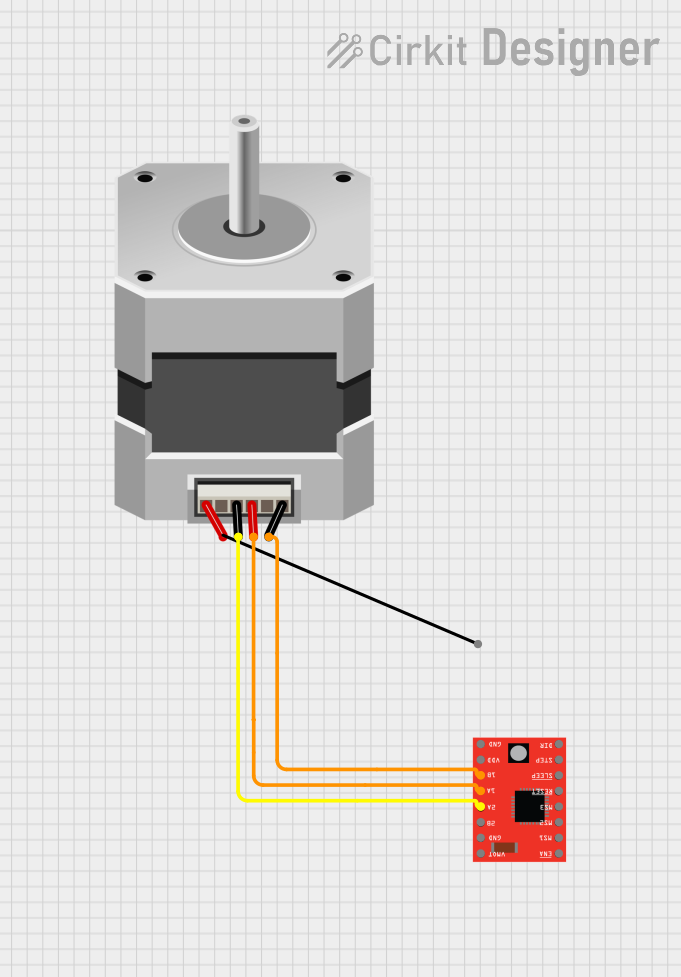
 Open Project in Cirkit Designer
Open Project in Cirkit Designer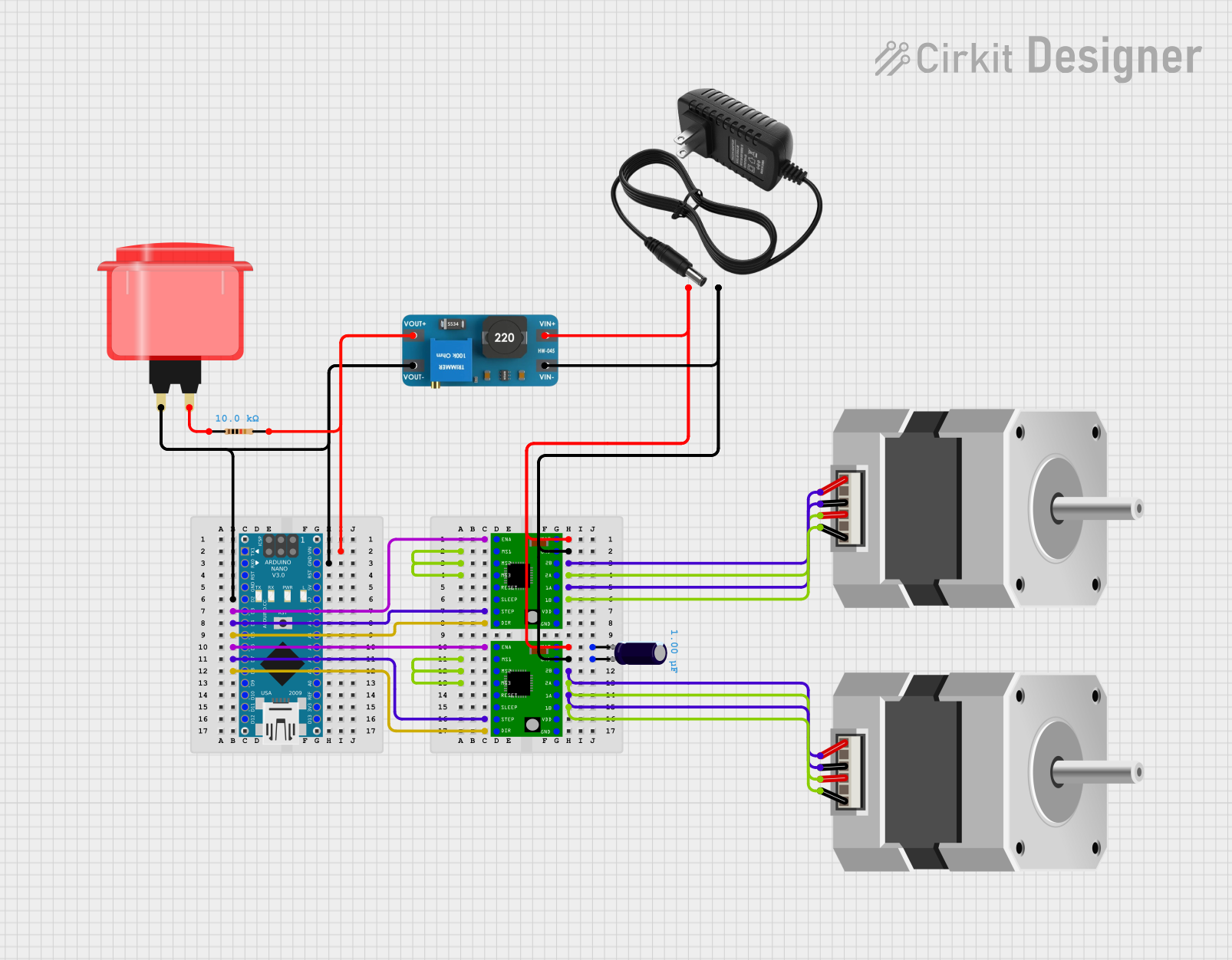
 Open Project in Cirkit Designer
Open Project in Cirkit DesignerExplore Projects Built with A4988 Circuit Board

 Open Project in Cirkit Designer
Open Project in Cirkit Designer
 Open Project in Cirkit Designer
Open Project in Cirkit Designer
 Open Project in Cirkit Designer
Open Project in Cirkit Designer
 Open Project in Cirkit Designer
Open Project in Cirkit DesignerCommon Applications:
- 3D printers for precise layer deposition
- CNC machines for accurate tool positioning
- Robotics for controlled motion
- Automated systems requiring stepper motor control
Technical Specifications
The A4988 Circuit Board is a compact and versatile driver with the following key specifications:
Key Technical Details:
- Input Voltage (VMOT): 8V to 35V
- Logic Voltage (VDD): 3.3V or 5V
- Maximum Output Current: 2A per coil (with sufficient cooling)
- Microstepping Modes: Full, 1/2, 1/4, 1/8, and 1/16 steps
- Current Control: Adjustable via onboard potentiometer
- Thermal Shutdown: Built-in over-temperature protection
- Dimensions: 20mm x 15mm (approx.)
Pin Configuration and Descriptions:
The A4988 Circuit Board has 16 pins, which are described in the table below:
| Pin Name | Type | Description |
|---|---|---|
| VMOT | Power Input | Motor power supply (8V to 35V). Connect to the stepper motor's power source. |
| GND | Ground | Ground connection for motor power supply. |
| VDD | Power Input | Logic voltage supply (3.3V or 5V). |
| GND | Ground | Ground connection for logic voltage. |
| 1A, 1B | Motor Output | Connect to one coil of the stepper motor. |
| 2A, 2B | Motor Output | Connect to the other coil of the stepper motor. |
| STEP | Logic Input | Step signal input. Each pulse moves the motor one step. |
| DIR | Logic Input | Direction control input. High or low determines the motor's rotation direction. |
| ENABLE | Logic Input | Enables or disables the driver. Active low. |
| MS1, MS2, MS3 | Logic Inputs | Microstepping mode selection. |
| RESET | Logic Input | Resets the driver. Active low. |
| SLEEP | Logic Input | Puts the driver into low-power sleep mode. Active low. |
Microstepping Mode Selection:
The microstepping mode is configured using the MS1, MS2, and MS3 pins as shown below:
| MS1 | MS2 | MS3 | Microstepping Mode |
|---|---|---|---|
| Low | Low | Low | Full Step |
| High | Low | Low | Half Step |
| Low | High | Low | Quarter Step |
| High | High | Low | Eighth Step |
| High | High | High | Sixteenth Step |
Usage Instructions
How to Use the A4988 in a Circuit:
Power Connections:
- Connect the VMOT pin to the motor power supply (8V to 35V).
- Connect the VDD pin to the logic voltage supply (3.3V or 5V).
- Ensure all ground pins (GND) are connected to a common ground.
Motor Connections:
- Connect the stepper motor's two coils to the 1A, 1B and 2A, 2B pins.
Control Signals:
- Use the STEP pin to send pulses for motor movement.
- Use the DIR pin to control the motor's rotation direction.
- Configure the microstepping mode using the MS1, MS2, and MS3 pins.
Adjust Current Limit:
- Use the onboard potentiometer to set the current limit. This prevents overheating and ensures optimal motor performance.
Enable/Disable the Driver:
- Use the ENABLE pin to enable or disable the driver. Pull it low to enable the driver.
Important Considerations:
- Heat Dissipation: The A4988 can get hot during operation. Use a heatsink or active cooling for high-current applications.
- Current Limiting: Always set the current limit to match your stepper motor's rated current to avoid damage.
- Decoupling Capacitors: Place a 100µF capacitor across VMOT and GND to reduce voltage spikes.
Example Code for Arduino UNO:
Below is an example of how to control a stepper motor using the A4988 with an Arduino UNO:
// Define control pins for the A4988
#define STEP_PIN 3 // Connect to the STEP pin on the A4988
#define DIR_PIN 4 // Connect to the DIR pin on the A4988
void setup() {
pinMode(STEP_PIN, OUTPUT); // Set STEP pin as output
pinMode(DIR_PIN, OUTPUT); // Set DIR pin as output
digitalWrite(DIR_PIN, HIGH); // Set initial direction (HIGH = clockwise)
}
void loop() {
// Generate a step pulse
digitalWrite(STEP_PIN, HIGH); // Set STEP pin HIGH
delayMicroseconds(1000); // Wait for 1ms (adjust for speed)
digitalWrite(STEP_PIN, LOW); // Set STEP pin LOW
delayMicroseconds(1000); // Wait for 1ms (adjust for speed)
}
Notes:
- Adjust the delay in
delayMicroseconds()to control the motor speed. - Use the DIR_PIN to change the motor's rotation direction.
Troubleshooting and FAQs
Common Issues and Solutions:
Motor Not Moving:
- Check all connections, especially the motor coils and power supply.
- Ensure the ENABLE pin is pulled low to activate the driver.
- Verify that the STEP and DIR signals are being sent correctly.
Overheating:
- Ensure the current limit is set correctly using the potentiometer.
- Add a heatsink or active cooling to the A4988.
Jerky or Inconsistent Movement:
- Verify the microstepping mode configuration (MS1, MS2, MS3 pins).
- Check for loose connections or insufficient power supply.
Driver Not Responding:
- Ensure the RESET and SLEEP pins are not pulled low.
- Confirm that the logic voltage (VDD) is within the acceptable range.
FAQs:
Q: Can I use the A4988 with a unipolar stepper motor?
A: No, the A4988 is designed for bipolar stepper motors only.Q: What happens if I exceed the current limit?
A: The driver may overheat and shut down due to thermal protection. Always set the current limit appropriately.Q: Can I control multiple stepper motors with one A4988?
A: No, each A4988 can control only one bipolar stepper motor.
By following this documentation, you can effectively use the A4988 Circuit Board for your stepper motor control applications.